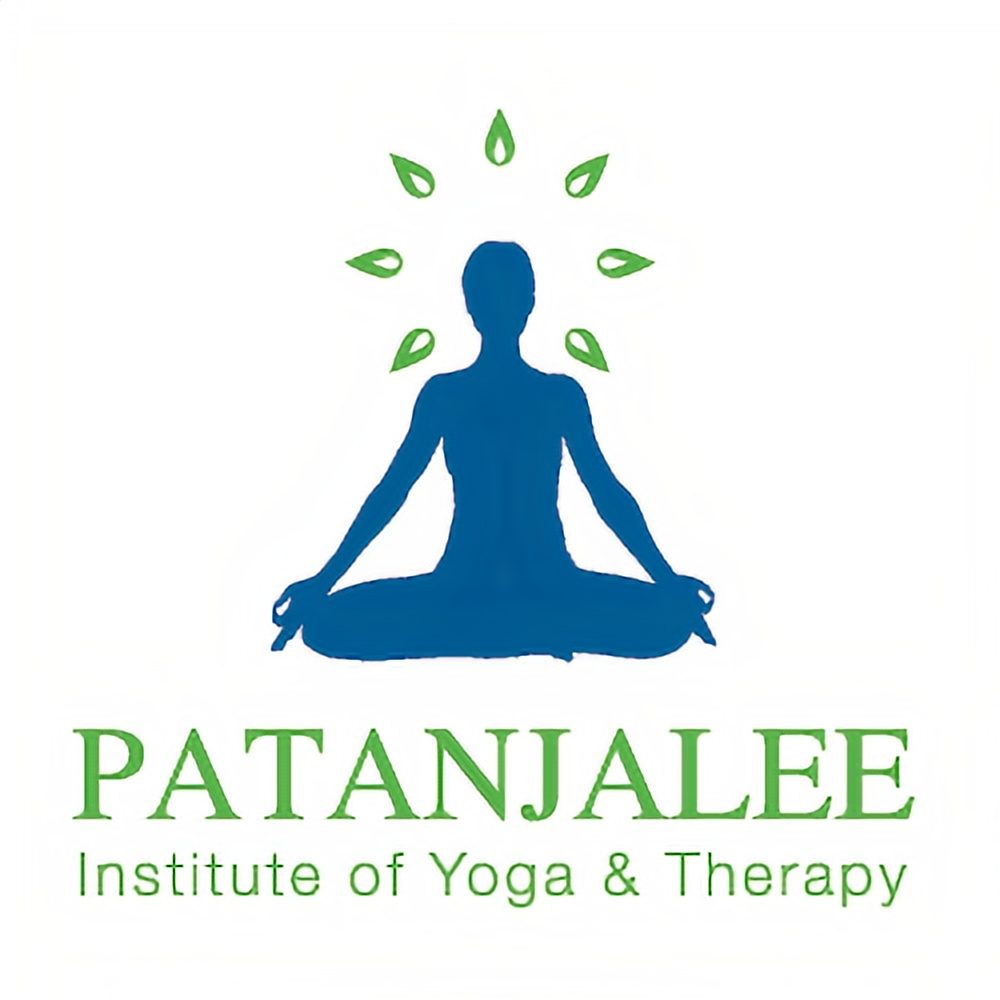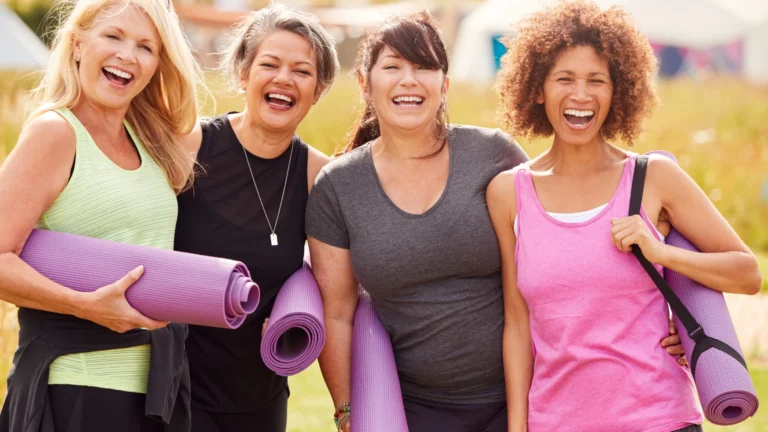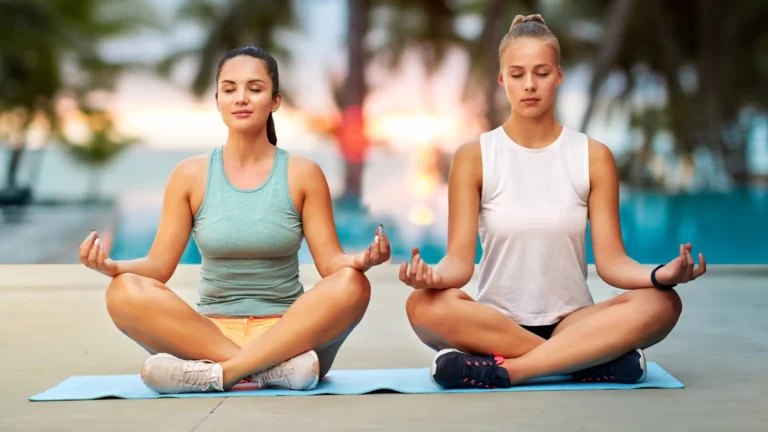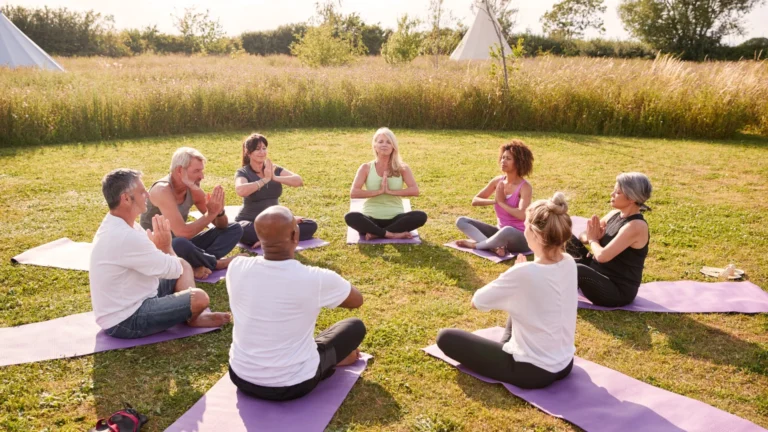How To Choose The Best Yoga Retreat?
Embarking on a yoga retreat can be a transformative experience, offering a unique blend of relaxation, self-discovery, and physical rejuvenation. The global yoga tourism market is projected to expand, reaching a value of USD 275.17 billion by 2031 .With countless retreats available worldwide, choosing the right one can feel overwhelming. This blog aims to simplify the process, helping you find the perfect yoga retreat in India that aligns with your needs and aspirations.
Understanding Your Goals
Before diving into the specifics of different retreats, it’s crucial to understand what you want to achieve. Are you looking to deepen your yoga practice, detoxify your body, meet like-minded people, or simply escape the hustle and bustle of daily life? Clarifying your goals will significantly narrow down your options.
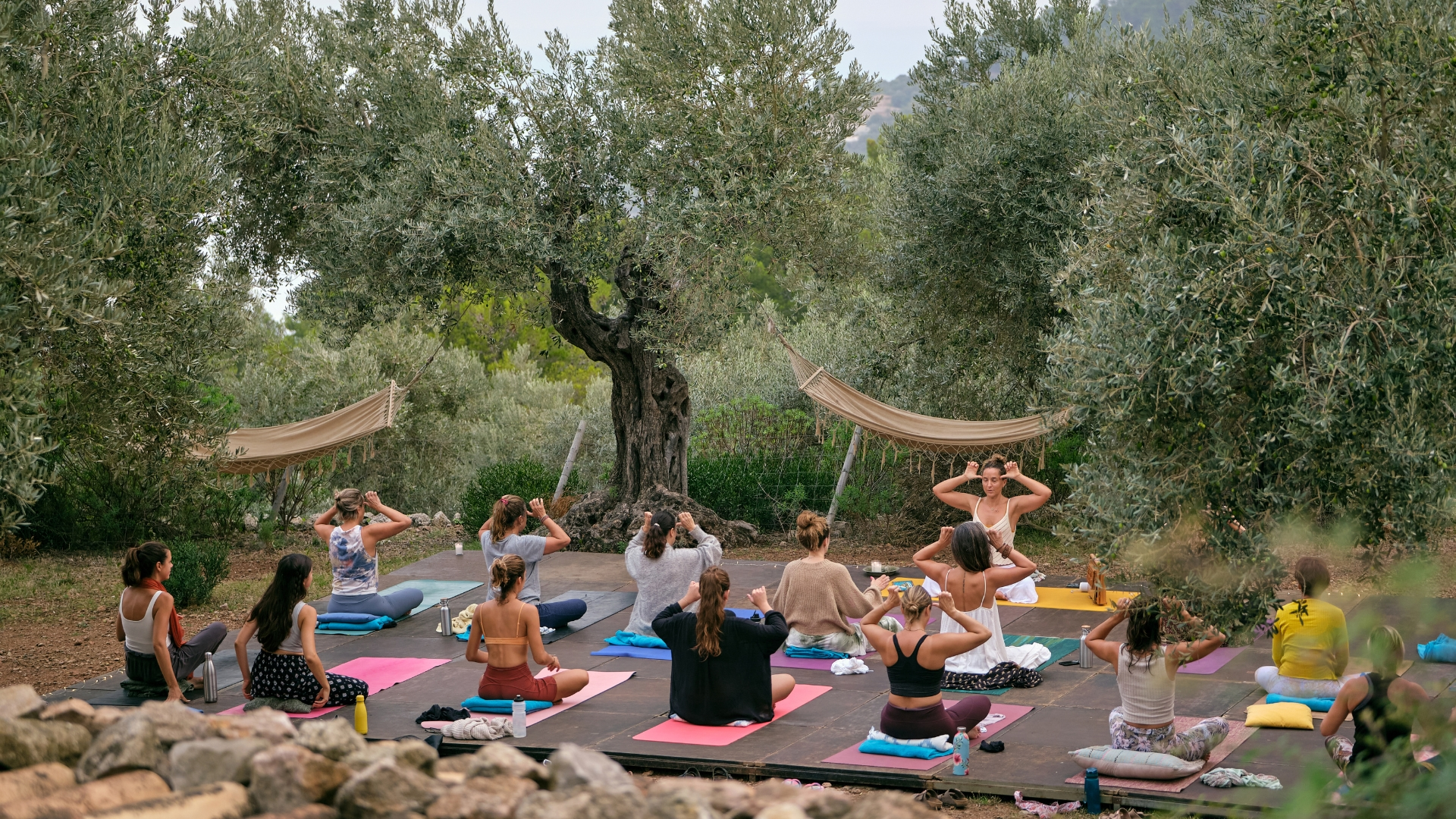
Reflect on Your Yoga Practice
Your level of yoga experience plays a significant role in choosing the right retreat. Here’s how you can align your practice with the retreat you choose:
- Beginners: If you are new to yoga, look for retreats that offer foundational classes with experienced instructors who can guide you through the basics. These retreats often provide a supportive environment where you can learn the fundamentals of yoga postures, breathing techniques, and meditation.
- Intermediate: For those with some experience, retreats that offer intermediate classes can help refine your practice and introduce you to new styles and techniques. Look for retreats that challenge you while providing opportunities for growth and learning.
- Advanced: Advanced practitioners might seek retreats with intensive practices, specialized workshops, and opportunities for deeper spiritual growth. These retreats often feature experienced instructors who can help you deepen your practice and explore advanced yoga techniques.
Define Your Desired Outcomes
Understanding your personal objectives will guide you towards a retreat that meets your expectations. Consider the following outcomes:
- Physical Health: Are you looking to improve flexibility, strength, or overall fitness? Many retreats offer programs focused on physical well-being, with a variety of yoga styles to suit different fitness levels.
- Mental Wellness: Do you need a break from stress and anxiety, seeking peace and relaxation? Look for retreats that emphasize mindfulness, meditation, and restorative yoga practices.
- Spiritual Growth: Are you interested in exploring the deeper, more spiritual aspects of yoga? Some retreats offer teachings on yoga philosophy, spiritual practices, and meditation techniques aimed at personal transformation.
Researching Locations
The location of your yoga retreat can significantly impact your experience. Consider the following factors when choosing a destination:
Geographic Preferences
The setting of your retreat can enhance your overall experience. Think about the kind of environment that will best support your goals:
- Exotic Locations: If you’re drawn to beautiful beaches, tropical climates, or mountainous regions, places like Bali, Costa Rica, or the Himalayas might be ideal. These locations offer natural beauty and a sense of adventure.
- Local Retreats: For a less costly and time-consuming option, consider retreats closer to home. Domestic retreats can be equally enriching and easier to fit into a busy schedule, reducing travel stress and costs.
Climate and Season
- Research the climate and best seasons to visit your desired locations. A retreat in the tropics during the rainy season might not be as enjoyable as one in the dry season. Consider:
- Weather: Look for favorable weather conditions that support outdoor activities and comfort.
- Seasonal Factors: High season can mean crowded retreats, while the low season might offer a more tranquil experience but potentially less favorable weather.
Cultural and Recreational Opportunities
Think about what you’d like to do outside of yoga classes. Some locations offer additional activities such as hiking, surfing, cultural tours, or spa treatments, enhancing your overall experience. Exploring local culture can add depth to your retreat experience, providing opportunities to learn and grow outside of your yoga practice.

Evaluating Retreat Programs
The structure and content of the retreat program are vital in ensuring it aligns with your goals and expectations. Consider the following aspects:
Types of Yoga Offered
Different retreats focus on various types of yoga. Some popular styles include:
- Hatha: Focuses on physical postures and is great for beginners. It’s slow-paced and emphasizes alignment and breathing.
- Vinyasa: Involves flowing sequences and can be more vigorous. It’s suitable for those looking for a dynamic practice.
- Ashtanga: A structured, often more challenging style. It follows a set sequence of postures and is ideal for disciplined practitioners.
- Yin: Slow-paced and focuses on deep stretching. It’s excellent for those looking to improve flexibility and find deep relaxation.
- Kundalini: Emphasizes breathwork, meditation, and spiritual growth. It’s suitable for those seeking a transformative and spiritual experience.
Choose a retreat from Patanjalee Yoga that offers the style of yoga that resonates with you and matches your practice level.
Daily Schedule
Examine the daily schedule to ensure it matches your preferences:
- Intensity: Some retreats are intensive with multiple yoga sessions and workshops daily, while others offer a more relaxed pace. Decide whether you want a rigorous schedule or more free time for relaxation and exploration.
- Balance: Look for a balance between structured activities and free time. Ensure there’s ample opportunity for relaxation, personal reflection, and enjoying the surroundings.
Additional Activities
Many retreats offer supplementary activities such as meditation, mindfulness workshops, nature hikes, and cultural excursions. These can enrich your experience and provide a well-rounded retreat. Consider:
- Workshops and Lectures: On topics like yoga philosophy, nutrition, or personal development.
- Outdoor Activities: Such as hiking, swimming, or sightseeing.
- Creative Activities: Art, music, or dance workshops.
These activities can enhance your retreat experience, providing opportunities for learning, relaxation, and personal growth.
Assessing Accommodation and Amenities
Comfortable accommodation and good amenities can greatly enhance your retreat experience. Consider the following factors:
Types of Accommodation
Retreats offer a range of accommodations from luxury villas to simple shared rooms. Consider your comfort needs and budget:
- Private Rooms: Ideal for those seeking solitude and personal space. They offer privacy and can be more comfortable.
- Shared Rooms: A more affordable option that also allows for social interaction. They can be a great way to meet new people and build connections.
On-Site Amenities
Look for amenities that are important to you, such as:
- Spa Services: Massage, facials, and other treatments for relaxation.
- Swimming Pool or Beach Access: For leisure and exercise.
- Healthy Dining: Nutritious meals that cater to dietary restrictions and preferences. Check if the retreat offers vegetarian, vegan, gluten-free, or other specialized diets.
Accessibility
Consider the ease of reaching the retreat. Check the proximity to airports and availability of transport services. Ensure the retreat location is convenient and doesn’t add unnecessary stress to your travel.

Instructor Qualifications and Teaching Style
The quality of instruction can make or break your retreat experience. Here’s what to look for:
Experience and Credentials
Research the instructors’ backgrounds, qualifications, and teaching experience. Look for:
- Certified Teachers: Instructors should be certified by recognized yoga institutions, such as the Yoga Alliance.
- Specialized Knowledge: Teachers with expertise in specific areas like meditation, anatomy, or Ayurveda can add value to your experience.
- Years of Experience: More experienced instructors often provide deeper insights and better guidance.
Teaching Style
Everyone has a different learning style. Ensure the instructors’ teaching styles resonate with you by reading reviews or watching videos of their classes if available. Consider:
- Communication Skills: Clear and effective communication is essential for understanding instructions and getting the most out of your practice.
- Approachability: Instructors who are approachable and open to questions can enhance your learning experience.
- Personal Connection: Sometimes, a personal connection with the instructor can significantly enhance your experience.
To learn more about the importance of yoga retreat and how it impacts your wellness, read our blog on “ The Impact of Yoga Retreats on Well-being ”
Budget Considerations
Your budget will play a significant role in selecting a yoga retreat. Here’s how to manage your finances effectively:
All-Inclusive vs. Pay-As-You-Go
- All-Inclusive: Most retreats offer packages that include accommodation, meals, and yoga classes, providing convenience and value for money. This option can simplify budgeting and planning.
- Additional Costs: Be aware of extra costs for activities, excursions, spa treatments, and tips. Ensure you understand what is included in the package and what might incur additional charges.
Discounts and Promotions
Look for early bird discounts, group rates, or off-season promotions to make your retreat more affordable. Consider:
- Early Bird Discounts: Booking in advance can often save you money.
- Group Discounts: Traveling with friends or family might qualify you for group rates.
- Off-Season Rates: Retreats often offer lower rates during the off-season. However, ensure that the off-season conditions still meet your expectations for the retreat experience.
Reviews and Recommendations
Feedback from past participants can provide valuable insights. Here’s how to use reviews and recommendations effectively:
Online Reviews
Websites like TripAdvisor, Yelp, or specialized yoga retreat platforms often feature detailed reviews. Pay attention to:
- Overall Ratings: General satisfaction levels of previous attendees.
- Specific Comments: Look for mentions of the instructors, accommodations, food quality, and overall organization.
- Photos: Visuals can give you a better sense of the facilities and environment.
Personal Recommendations
If possible, seek recommendations from friends, family, or your local yoga community. Personal experiences can provide honest and trustworthy insights. Consider:
- Word of Mouth: Personal testimonials from people you trust can be very reliable.
- Yoga Community: Your local yoga studio or online yoga groups can be great resources for recommendations.
Personal Alignment
Finally, ensure the retreat resonates with you on a personal level. Consider the following:
Philosophical Alignment
Some retreats emphasize certain philosophical or spiritual traditions. Make sure these align with your beliefs and interests. Consider:
- Yoga Philosophy: Some retreats focus heavily on the philosophical aspects of yoga, which may include teachings from the Yoga Sutras, Bhagavad Gita, or other sacred texts.
- Spiritual Practices: If you’re interested in deepening your spiritual practice, look for retreats that incorporate meditation, chanting, or other spiritual activities.
Intuition
Trust your gut feeling. If a retreat description speaks to you and feels right, it likely is. Sometimes, your intuition can guide you to the perfect retreat even when all practical considerations are met.
Practical Tips for a Successful Yoga Retreat
To make the most of your yoga retreat experience, consider the following practical tips:
Pack Appropriately
Ensure you pack comfortable yoga clothing, any necessary yoga props (if not provided by the retreat), and other essentials like sunscreen, insect repellent, and personal toiletries.
Prepare Mentally and Physically
Leading up to the retreat, try to establish a regular yoga practice to prepare your body. Mentally, set clear intentions for what you hope to achieve during the retreat.
Stay Open-Minded
Be open to new experiences and learning opportunities. Yoga retreats can be a chance to step out of your comfort zone and try new practices or philosophies.
Engage Fully
Participate fully in the retreat activities and make an effort to connect with other participants. Building a supportive community can enhance your overall experience.
Take Time for Reflection
Use the retreat as an opportunity for self-reflection and personal growth. Keep a journal to document your experiences and insights.
Post-Retreat Integration
After the retreat, take time to integrate what you’ve learned into your daily life. Establish a regular yoga and meditation practice to maintain the benefits of the retreat.
Conclusion
Choosing the best yoga retreat involves careful consideration of your personal goals, the retreat’s location, program structure, accommodations, instructor quality, budget, and reviews. By taking the time to reflect on what you truly want from the experience and conducting thorough research, you can find a retreat that not only meets but exceeds your expectations. A well-chosen yoga retreat can offer profound benefits, helping you reconnect with yourself and return to daily life rejuvenated and inspired.
